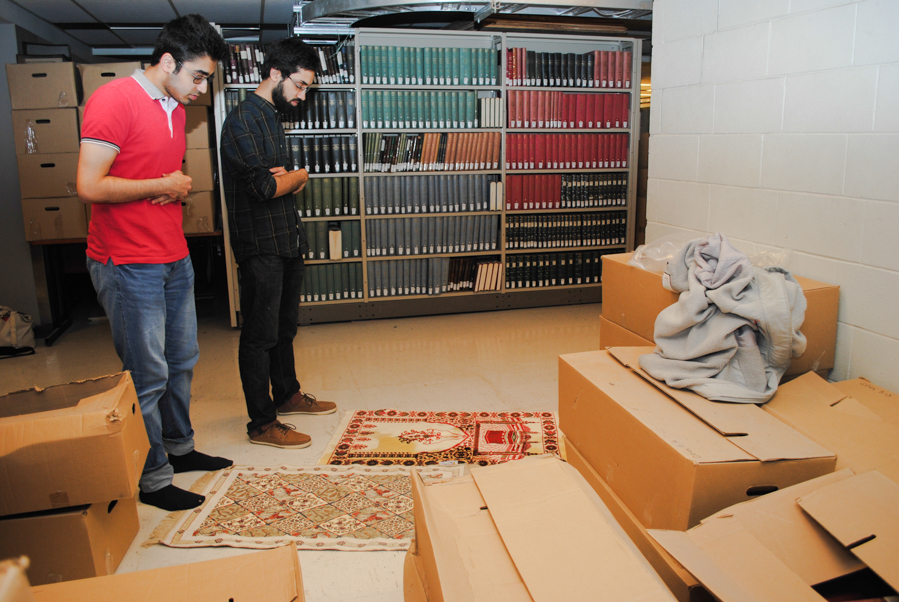On top of balancing academics and student life, Muslim students on campus face the extra challenge of constantly searching for alternative prayer spaces. In 2005, the University removed the existing prayer room in the basement of Peterson Hall, citing its secular mandate as an academic institution. With the McGill administration unwilling to offer any assistance, SSMU offered a temporary space in the Shatner building for the Muslim Student Association (MSA) to use as a prayer room.
The room remains a less than ideal space, with its limited access, poor sound insulation – try meditating with the Top 40 songs being blasted from Gerts – and lack of washroom facilities to make ablution. When the building is closed or access is limited, such as during Activities Night and other events, Muslim students are left with no viable alternatives. Those who can go home to pray, while long-distance commuters are left with the choice of praying under stairwells, in isolated corners, or between library bookshelves. This photo essay aims to highlight some of these desolate spaces, and reiterate the need for a larger, permanent prayer space.
“Part of being on a diverse campus, if you want to truly represent multicultural values, [is to] create a space where everybody feels welcome as they are. As practicing Muslims, prayer is a part of our identity and it’s never an issue in terms of interfering with people’s productivity. We are very flexible as Muslims, within the bounds of our faith.”
– Omar Edaibat
“It’s a question of just having a space on campus that is accessible and easy for us to be able to pray and worship. We’ve seen it across other campuses and it works very well – multi-faith prayer rooms or [rooms] specific to Muslims.”
– Omar Edaibat
[flickr id=”72157648418909618″]
“It was [midday] prayer time, and we were getting ready to pray [in the Redpath basement]. A security guard approached us and said we are not supposed to [pray there]. He pointed to a notice that said the basement area is only for getting books and that the study space is upstairs. I think he was reading between the lines because it didn’t say explicitly we couldn’t pray there. But another security guard said it’s fine, because formally there is no such [rule].”
– Bilal Ahmad
“Most of the time I pray in the Musalla [the prayer room]. I live really close; if the Musalla is closed I just go home to pray. The problem for some girls is when praying outside the Musalla they may need headscarves and skirts which they have to carry around or find.[Girls] might not feel comfortable, because they want a closed and isolated space not a public space.”
– Sara Kassem
“Praying in public, you feel a bit more uncomfortable. Technically it shouldn’t be, but I feel like it is. I’ve had situations when I am praying [in the library] and then someone comes in because they want to take a book out of the shelf. It’s really awkward because they don’t want [to interrupt] and I can’t say anything, or do anything while I am praying. So when I finish I have to apologize to them and tell them I was praying. It’s sort of embarrassing at times, but its good too because they get to know something about me. Still, it’s inconvenient.”
– Youmna Sayyidah
